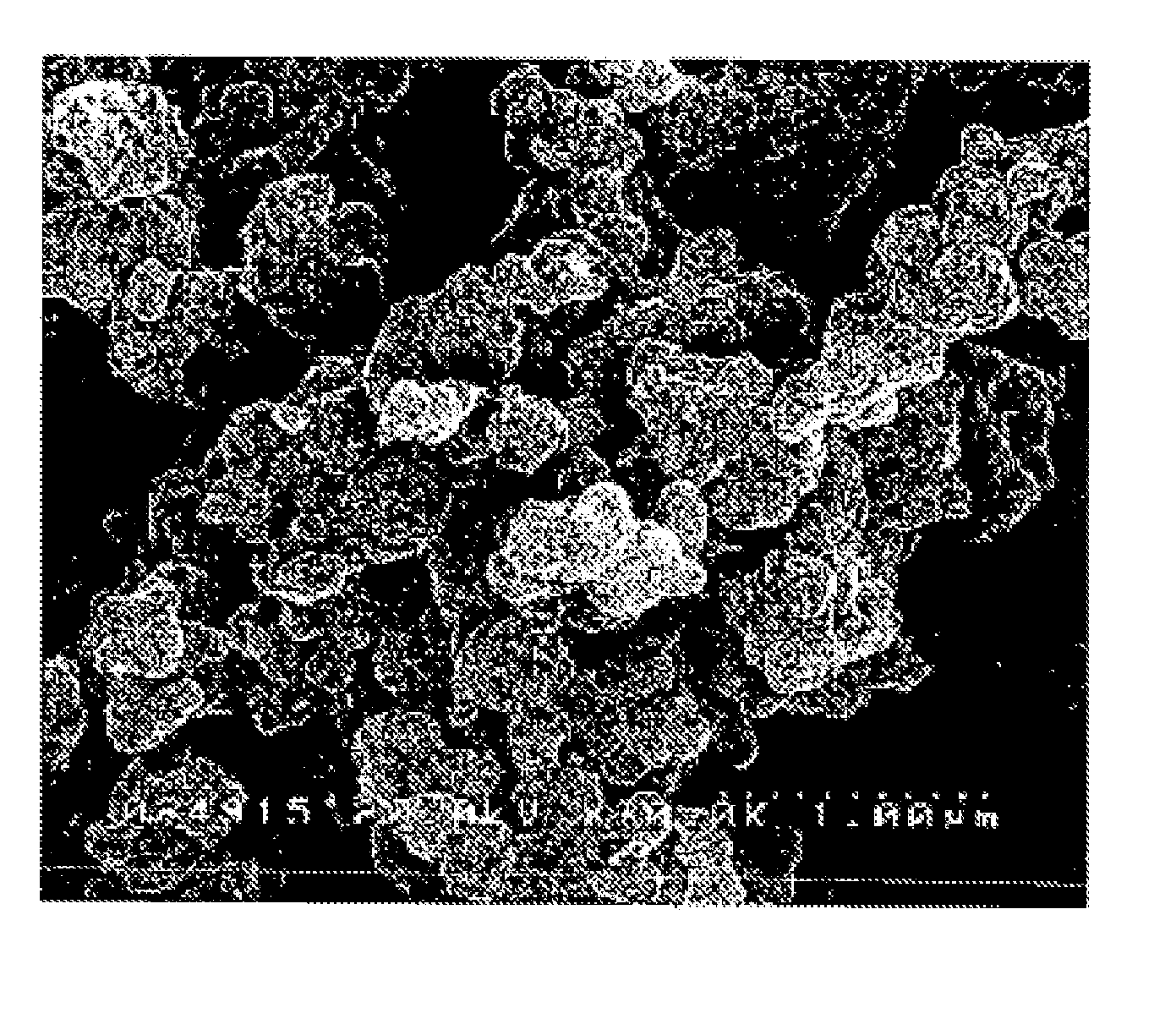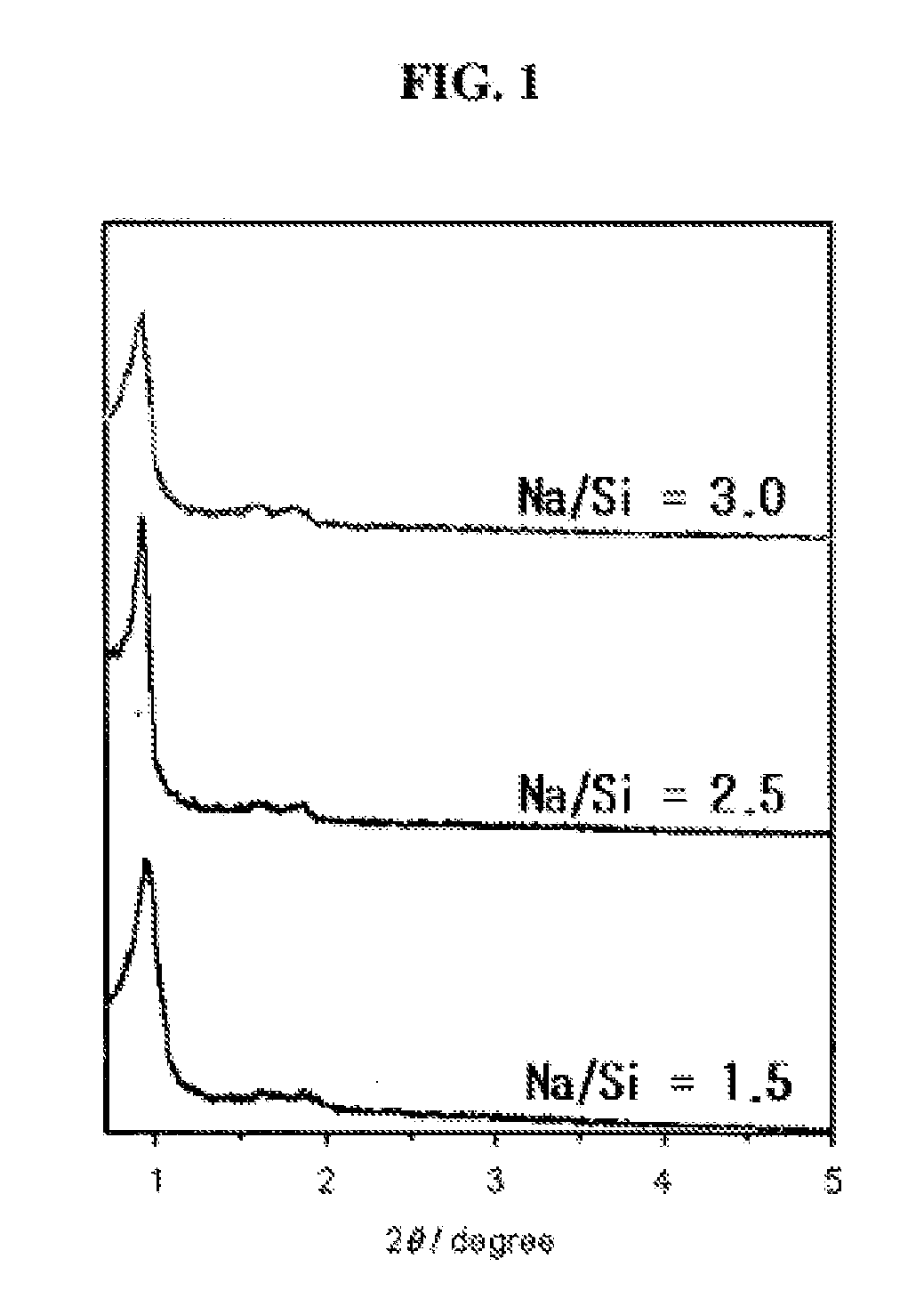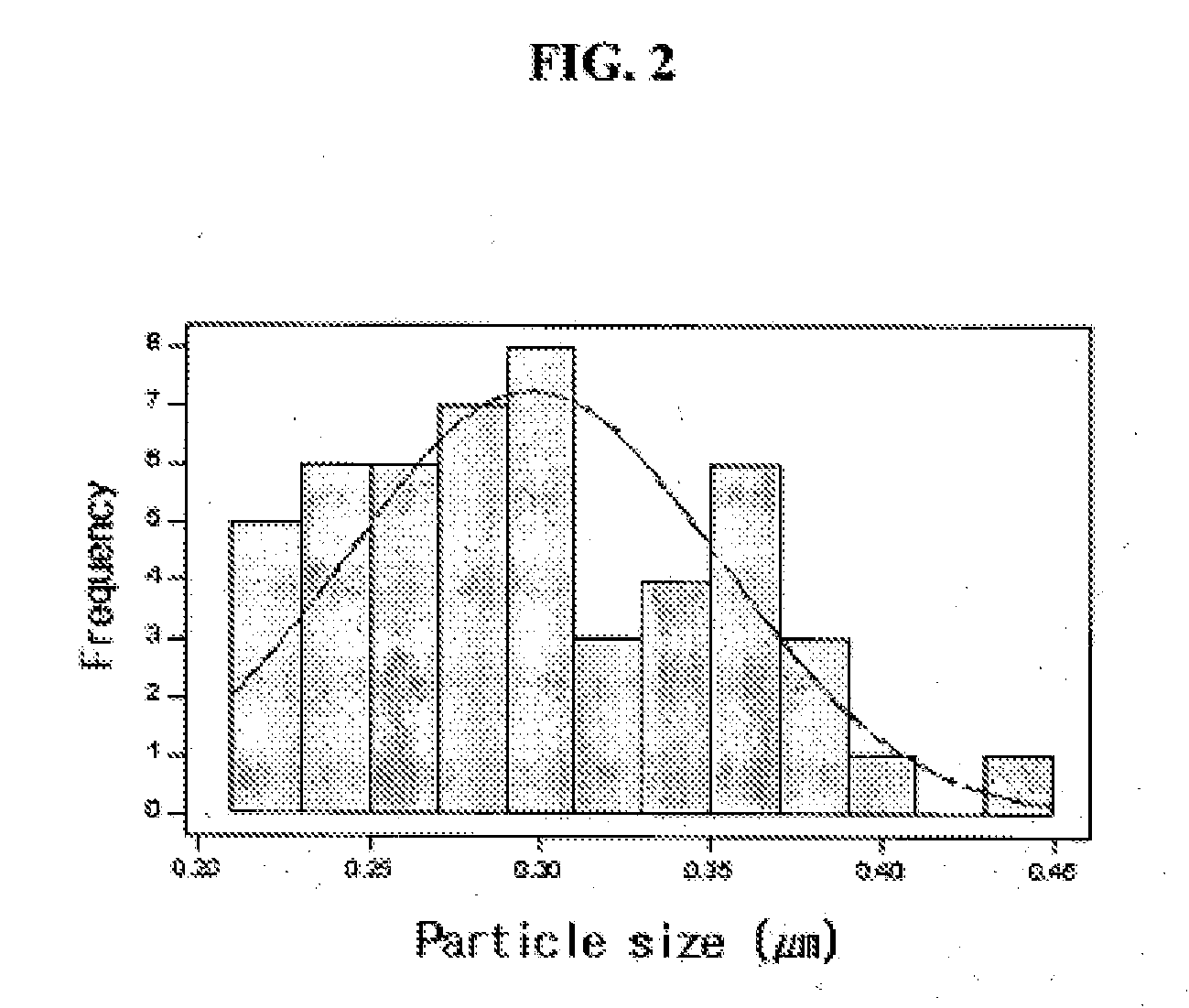Mesoporous carbon molecular sieve and supported catalyst employing the same
a molecular sieve and carbon molecular sieve technology, applied in the direction of catalyst carriers, physical/chemical process catalysts, cell components, etc., can solve the problems of poor micropore interconnection, poor performance of dmfcs employing metal particle catalysts, poor micropore interconnection, etc., to improve the activity of a supported catalys
- Summary
- Abstract
- Description
- Claims
- Application Information
AI Technical Summary
Benefits of technology
Problems solved by technology
Method used
Image
Examples
examples specific examples 1-2
odium silicate
[0057] To control the average primary particle size of the mesoporous silica molecular sieve, sodium silicate solutions with different Na:Si atomic ratios were prepared. Na:Si atomic ratios of sodium silicate in the sodium silicate solutions prepared in Examples 1-2 were 1.5:1 and 2.5:1, respectively.
[0058] To prepare sodium silicate solutions of Examples 1-2, the corresponding amount of NaOH was first dissolved in distilled water, and then, Ludox HS-40 (Dupont, USA; the content of SiO2:40% by weight) was added thereto while stirring. The, contents of SiO2 added to each of the solutions were identically 10% by weight. Then, the mixture was heated at a temperature of about 75° C. for about 30 minutes to obtain a clear solution. The conditions for preparing the sodium silicate solutions of Examples 1-2 are summarized in Table 1 below.
TABLE 1Na:Si atomicratio ofAmount ofAmount ofAmount ofgeneratedwater (g)NaOH (g)Ludox HS-40sodiumusedused(g) usedsilicatePreparation413....
specific examples 3-4
Preparation of a Mesoporous Silica Molecular Sieve
[0059] To prepare the mesoporous silica molecular sieves of Examples 3-4, P123 polymer was dissolved in distilled water and sodium silicate solutions of Examples 1-2, respectively, were added to the resulting solution while stirring. An acetic acid was added to the mixture and heated at about 45° C. for about 24 hours to produce precipitates. The precipitates were filtered and washed with distilled water and then dried in a vacuum oven at room temperature for about 24 hours. The dried precipitates were calcined at about 550° C. for about 10 hours. The conditions for preparing the mesoporous silica molecular sieves of Examples 3-4, respectively, are summarized in Table 2 below.
TABLE 2Sodium silicate solutionAverage primaryAmountAmountNa:Si atomicparticle size ofof waterof P123SolutionAmountratio of sodiumAmount of aceticresulting silica(g) used(g) usedused(g) usedsilicateacid (g) usedmolecular sieve (nm)Specific59.91.643Preparatio...
specific examples 5-6
Preparation of a Mesoporous Carbon Molecular Sieve
[0061] The mesoporous carbon molecular sieve of Example 5 was prepared using the mesoporous silica molecular sieve obtained in Example 3 as a template.
[0062] 0.94 g of sucrose was dissolved in 3.75 g of secondary distilled water, and 0.11 g of 97% sulphuric acid was added to the aqueous solution to prepare a polymerizable carbon-containing compound impregnating solution. The impregnating solution was supported on the mesoporous silica molecular sieve obtained in Example 3 using an impregnating method. The impregnated silica molecular sieve was dried at about 100° C. for about 6 hours and heated at about 160° C. for 6 hours again. The silica molecular sieve that had undergone the first impregnation and drying, was impregnated again in the polymerizable carbon-containing compound impregnating solution, and then the resultant was dried and heated in the same manner as above. The amount of the impregnating solution used at the time of...
PUM
| Property | Measurement | Unit |
|---|---|---|
| diameter | aaaaa | aaaaa |
| particle size | aaaaa | aaaaa |
| particle size | aaaaa | aaaaa |
Abstract
Description
Claims
Application Information
 Login to View More
Login to View More - R&D
- Intellectual Property
- Life Sciences
- Materials
- Tech Scout
- Unparalleled Data Quality
- Higher Quality Content
- 60% Fewer Hallucinations
Browse by: Latest US Patents, China's latest patents, Technical Efficacy Thesaurus, Application Domain, Technology Topic, Popular Technical Reports.
© 2025 PatSnap. All rights reserved.Legal|Privacy policy|Modern Slavery Act Transparency Statement|Sitemap|About US| Contact US: help@patsnap.com



